Antigenic drift and subtype interference shape A(H3N2) epidemic dynamics in the United States
- PMID: 39319780
- PMCID: PMC11424097
- DOI: 10.7554/eLife.91849
Antigenic drift and subtype interference shape A(H3N2) epidemic dynamics in the United States
Abstract
Influenza viruses continually evolve new antigenic variants, through mutations in epitopes of their major surface proteins, hemagglutinin (HA) and neuraminidase (NA). Antigenic drift potentiates the reinfection of previously infected individuals, but the contribution of this process to variability in annual epidemics is not well understood. Here, we link influenza A(H3N2) virus evolution to regional epidemic dynamics in the United States during 1997-2019. We integrate phenotypic measures of HA antigenic drift and sequence-based measures of HA and NA fitness to infer antigenic and genetic distances between viruses circulating in successive seasons. We estimate the magnitude, severity, timing, transmission rate, age-specific patterns, and subtype dominance of each regional outbreak and find that genetic distance based on broad sets of epitope sites is the strongest evolutionary predictor of A(H3N2) virus epidemiology. Increased HA and NA epitope distance between seasons correlates with larger, more intense epidemics, higher transmission, greater A(H3N2) subtype dominance, and a greater proportion of cases in adults relative to children, consistent with increased population susceptibility. Based on random forest models, A(H1N1) incidence impacts A(H3N2) epidemics to a greater extent than viral evolution, suggesting that subtype interference is a major driver of influenza A virus infection ynamics, presumably via heterosubtypic cross-immunity.
Keywords: H3N2; antigenic drift; epidemiology; global health; human; infectious disease; influenza virus; microbiology; virus.
Plain language summary
Seasonal influenza (flu) viruses cause outbreaks every winter. People infected with influenza typically develop mild respiratory symptoms. But flu infections can cause serious illness in young children, older adults and people with chronic medical conditions. Infected or vaccinated individuals develop some immunity, but the viruses evolve quickly to evade these defenses in a process called antigenic drift. As the viruses change, they can re-infect previously immune people. Scientists update the flu vaccine yearly to keep up with this antigenic drift. The immune system fights flu infections by recognizing two proteins, known as antigens, on the virus’s surface, called hemagglutinin (HA) and neuraminidase (NA). However, mutations in the genes encoding these proteins can make them unrecognizable, letting the virus slip past the immune system. Scientists would like to know how these changes affect the size, severity and timing of annual influenza outbreaks. Perofsky et al. show that tracking genetic changes in HA and NA may help improve flu season predictions. The experiments compared the severity of 22 flu seasons caused by the A(H3N2) subtype in the United States with how much HA and NA had evolved since the previous year. The A(H3N2) subtype experiences the fastest rates of antigenic drift and causes more cases and deaths than other seasonal flu viruses. Genetic changes in HA and NA were a better predictor of A(H3N2) outbreak severity than the blood tests for protective antibodies that epidemiologists traditionally use to track flu evolution. However, the prevalence of another subtype of influenza A circulating in the population, called A(H1N1), was an even better predictor of how severe A(H3N2) outbreaks would be. Perofsky et al. are the first to show that genetic changes in NA contribute to the severity of flu seasons. Previous studies suggested a link between genetic changes in HA and flu season severity, and flu vaccines include the HA protein to help the body recognize new influenza strains. The results suggest that adding the NA protein to flu vaccines may improve their effectiveness. In the future, flu forecasters may want to analyze genetic changes in both NA and HA to make their outbreak predictions. Tracking how much of the A(H1N1) subtype is circulating may also be useful for predicting the severity of A(H3N2) outbreaks.
Conflict of interest statement
AP, JH, JB, TR, XX, RK, DW, NL, LW, BE, RH, MG, RD, SF, KN, NK, SW, HH, TB No competing interests declared, CH Received personal fees from Sanofi outside the submitted work, JM Received consulting fees, honoraria, and travel support from Sanofi Pasteur and Sequris, SS The WHO Collaborating Centre for Reference and Research on Influenza in Melbourne has a collaborative research and development agreement (CRADA) with CSL Seqirus for isolation of candidate vaccine viruses in cells and an agreement with IFPMA for isolation of candidate vaccine viruses in eggs. SGS reports honoraria from CSL Seqirus, Moderna, Pfizer, and Evo Health, IB, KS The WHO Collaborating Centre for Reference and Research on Influenza in Melbourne has a collaborative research and development agreement (CRADA) with CSL Seqirus for isolation of candidate vaccine viruses in cells and an agreement with IFPMA for isolation of candidate vaccine viruses in eggs, FK The Icahn School of Medicine at Mount Sinai has filed patent applications relating to influenza virus vaccines (U.S. patent numbers: 12030928, 11865173, 11266734, 11254733, 10736956, 10583188, 10137189, 10131695, 9968670, 9371366; publication numbers: 20230181715, 20220403358, 20220249652, 20220242935, 20220153873, 20210260179, 20190125859, 20190106461, 20180333479), SARS-CoV-2 serological assays (publication number: 20240210415), and SARS-CoV-2 vaccines (publication numbers: 20230310583, 20230226171), which list FK as co-inventor. FK has consulted for Merck and Pfizer (before 2020), and is currently consulting for Pfizer, Seqirus, 3rd Rock Ventures, GSK and Avimex. The Krammer laboratory is also collaborating with Pfizer on animal models of SARS‐CoV‐2 and with Dynavax on universal influenza virus vaccines, CV Received honoraria for serving as an Editor in Chief of the journal Epidemics (Elsevier)
Figures








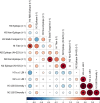
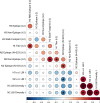
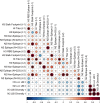


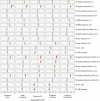
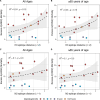





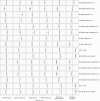





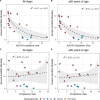









Update of
-
Antigenic drift and subtype interference shape A(H3N2) epidemic dynamics in the United States.medRxiv [Preprint]. 2024 May 22:2023.10.02.23296453. doi: 10.1101/2023.10.02.23296453. medRxiv. 2024. Update in: Elife. 2024 Sep 25;13:RP91849. doi: 10.7554/eLife.91849. PMID: 37873362 Free PMC article. Updated. Preprint.
Similar articles
-
Antigenic drift and subtype interference shape A(H3N2) epidemic dynamics in the United States.medRxiv [Preprint]. 2024 May 22:2023.10.02.23296453. doi: 10.1101/2023.10.02.23296453. medRxiv. 2024. Update in: Elife. 2024 Sep 25;13:RP91849. doi: 10.7554/eLife.91849. PMID: 37873362 Free PMC article. Updated. Preprint.
-
The antigenic landscape of human influenza N2 neuraminidases from 2009 until 2017.Elife. 2024 May 28;12:RP90782. doi: 10.7554/eLife.90782. Elife. 2024. PMID: 38805550 Free PMC article.
-
Integrating genotypes and phenotypes improves long-term forecasts of seasonal influenza A/H3N2 evolution.Elife. 2020 Sep 2;9:e60067. doi: 10.7554/eLife.60067. Elife. 2020. PMID: 32876050 Free PMC article.
-
H3N2 influenza viruses in humans: Viral mechanisms, evolution, and evaluation.Hum Vaccin Immunother. 2018;14(8):1840-1847. doi: 10.1080/21645515.2018.1462639. Epub 2018 May 14. Hum Vaccin Immunother. 2018. PMID: 29641358 Free PMC article. Review.
-
[Molecular characterization of human influenza viruses--a look back on the last 10 years].Berl Munch Tierarztl Wochenschr. 2006 Mar-Apr;119(3-4):167-78. Berl Munch Tierarztl Wochenschr. 2006. PMID: 16573207 Review. German.
Cited by
-
Commuting-driven competition between transmission chains shapes seasonal influenza virus epidemics in the United States.medRxiv [Preprint]. 2024 Aug 9:2024.08.09.24311720. doi: 10.1101/2024.08.09.24311720. medRxiv. 2024. PMID: 39148829 Free PMC article. Preprint.
-
Measures of population immunity can predict the dominant clade of influenza A (H3N2) in the 2017-2018 season and reveal age-associated differences in susceptibility and antibody-binding specificity.medRxiv [Preprint]. 2024 Oct 10:2023.10.26.23297569. doi: 10.1101/2023.10.26.23297569. medRxiv. 2024. Update in: Influenza Other Respir Viruses. 2024 Nov;18(11):e70033. doi: 10.1111/irv.70033. PMID: 37961288 Free PMC article. Updated. Preprint.
-
Trends of respiratory viruses and factors associated with severe acute respiratory infection in patients presenting at a university hospital: a 6-year retrospective study across the COVID-19 pandemic.Front Public Health. 2025 Mar 28;13:1494463. doi: 10.3389/fpubh.2025.1494463. eCollection 2025. Front Public Health. 2025. PMID: 40226317 Free PMC article.
-
Evaluating the Immunogenicity of an Intranasal Microparticle Combination Vaccine for COVID-19 and Influenza.Vaccines (Basel). 2025 Mar 7;13(3):282. doi: 10.3390/vaccines13030282. Vaccines (Basel). 2025. PMID: 40266139 Free PMC article.
-
Competition between transmission lineages mediated by human mobility shapes seasonal influenza epidemics in the US.Nat Commun. 2025 May 17;16(1):4605. doi: 10.1038/s41467-025-59757-4. Nat Commun. 2025. PMID: 40382319 Free PMC article.
References
-
- Ali ST, Lau YC, Shan S, Ryu S, Du Z, Wang L, Xu XK, Chen D, Xiong J, Tae J, Tsang TK, Wu P, Lau EHY, Cowling BJ. Prediction of upcoming global infection burden of influenza seasons after relaxation of public health and social measures during the COVID-19 pandemic: a modelling study. The Lancet. Global Health. 2022;10:e1612–e1622. doi: 10.1016/S2214-109X(22)00358-8. - DOI - PMC - PubMed
MeSH terms
Substances
Grants and funding
- 10111800/Ministry of Health, Labour and Welfare
- 75N93019C00051/NH/NIH HHS/United States
- FC001030/WT_/Wellcome Trust/United Kingdom
- 10110400/Ministry of Health, Labour and Welfare
- JP22fk0108118/Japan Agency for Medical Research and Development
- HHSN272201400008C/NH/NIH HHS/United States
- F31 AI140714/NH/NIH HHS/United States
- 75N93021C00014/AI/NIAID NIH HHS/United States
- 75N93019C00051/AI/NIAID NIH HHS/United States
- 75N93021C00014/NH/NIH HHS/United States
- R01 AI165821/AI/NIAID NIH HHS/United States
- R01 AI165821/NH/NIH HHS/United States
- HHSN272201400008C/AI/NIAID NIH HHS/United States
- F31 AI140714/AI/NIAID NIH HHS/United States
- 1354890/National Science Foundation
- R35 GM119774/GM/NIGMS NIH HHS/United States
- R35 GM119774/NH/NIH HHS/United States
- R01 AI127893/NH/NIH HHS/United States
- FC001030/MRC_/Medical Research Council/United Kingdom
- JP23fk0108662/Japan Agency for Medical Research and Development
- FC001030/CRUK_/Cancer Research UK/United Kingdom
- R01 AI127893/AI/NIAID NIH HHS/United States
LinkOut - more resources
Full Text Sources
Medical
Research Materials
Miscellaneous

